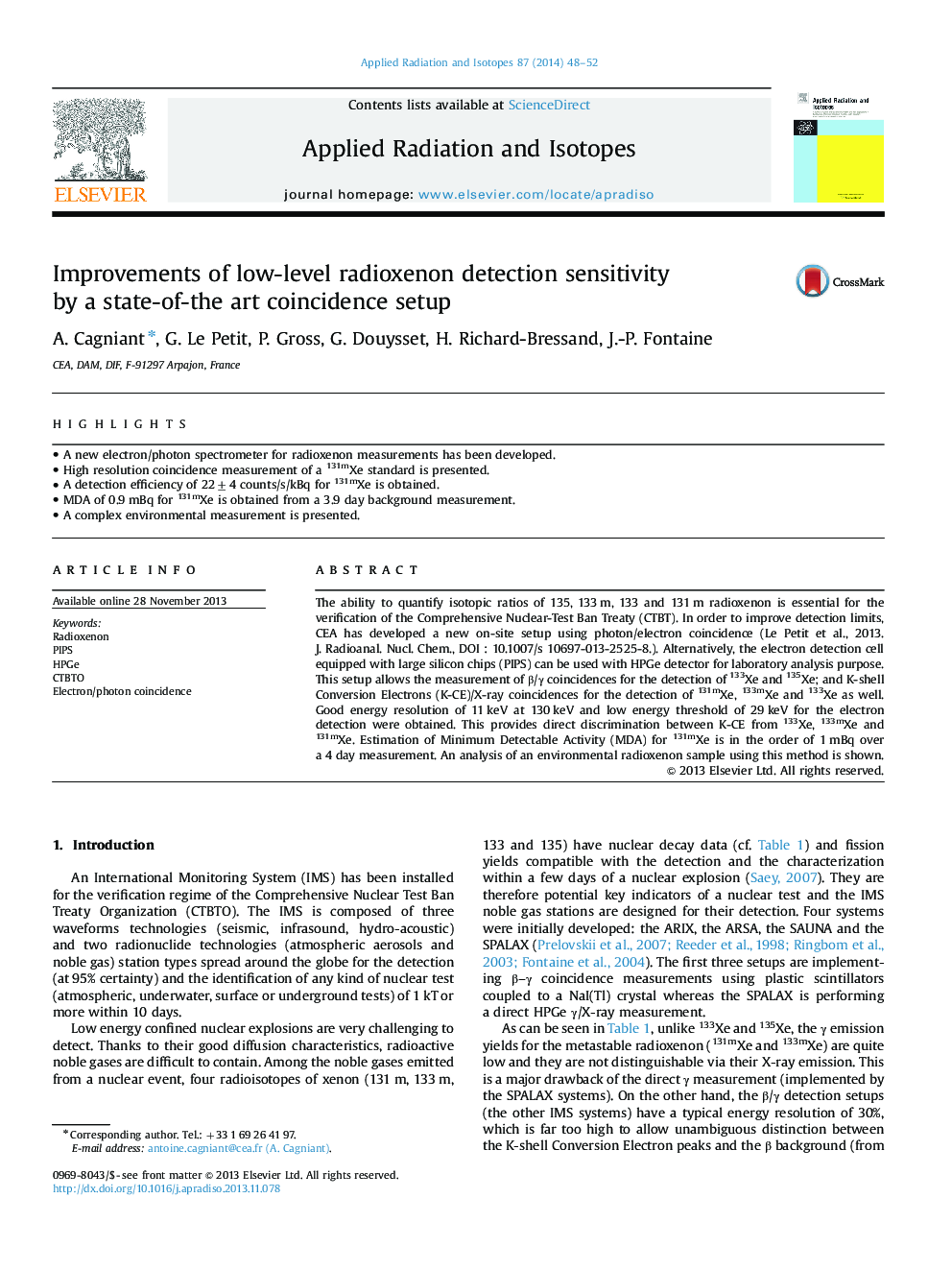| Article ID | Journal | Published Year | Pages | File Type |
|---|---|---|---|---|
| 1878618 | Applied Radiation and Isotopes | 2014 | 5 Pages |
Abstract
The ability to quantify isotopic ratios of 135, 133 m, 133 and 131 m radioxenon is essential for the verification of the Comprehensive Nuclear-Test Ban Treaty (CTBT). In order to improve detection limits, CEA has developed a new on-site setup using photon/electron coincidence (Le Petit et al., 2013. J. Radioanal. Nucl. Chem., DOI : 10.1007/s 10697-013-2525-8.). Alternatively, the electron detection cell equipped with large silicon chips (PIPS) can be used with HPGe detector for laboratory analysis purpose. This setup allows the measurement of β/γ coincidences for the detection of 133Xe and 135Xe; and K-shell Conversion Electrons (K-CE)/X-ray coincidences for the detection of 131mXe, 133mXe and 133Xe as well. Good energy resolution of 11 keV at 130 keV and low energy threshold of 29 keV for the electron detection were obtained. This provides direct discrimination between K-CE from 133Xe, 133mXe and 131mXe. Estimation of Minimum Detectable Activity (MDA) for 131mXe is in the order of 1 mBq over a 4 day measurement. An analysis of an environmental radioxenon sample using this method is shown.
Keywords
Related Topics
Physical Sciences and Engineering
Physics and Astronomy
Radiation
Authors
A. Cagniant, G. Le Petit, P. Gross, G. Douysset, H. Richard-Bressand, J.-P. Fontaine,
